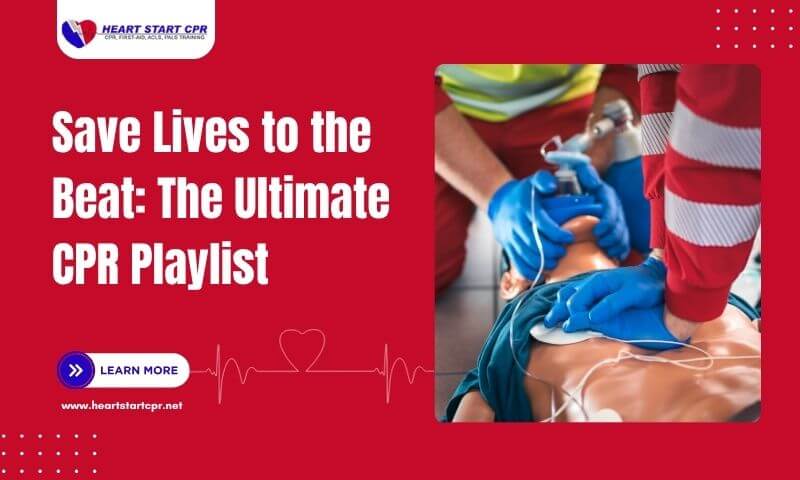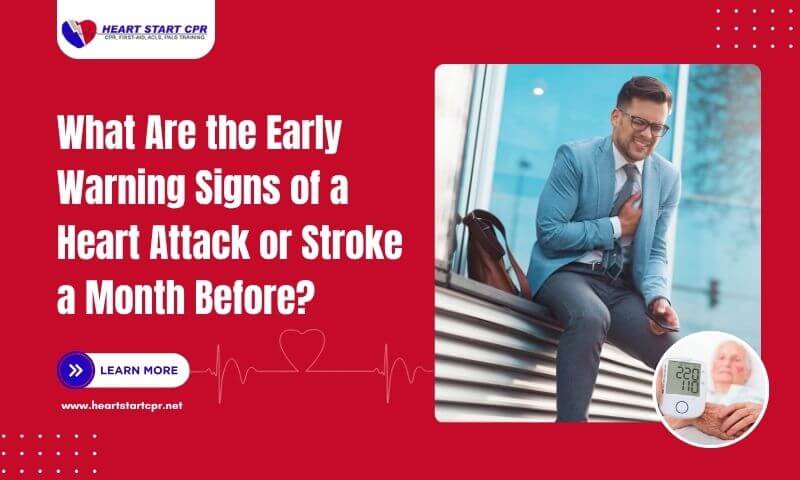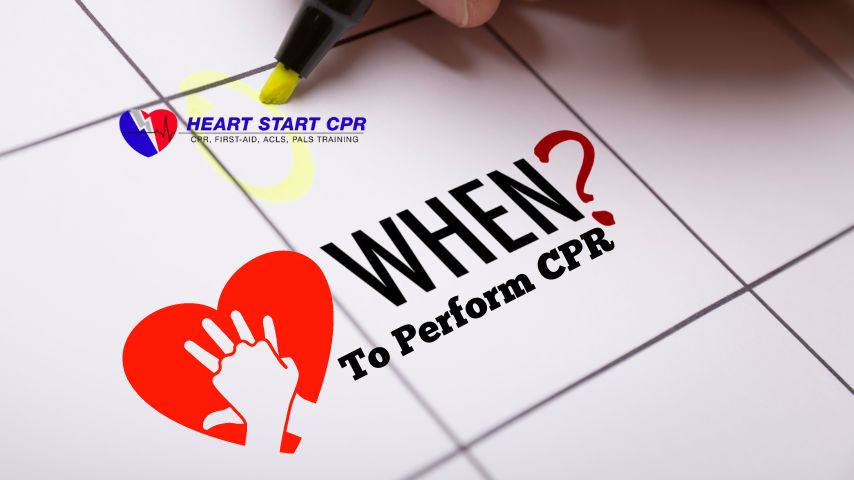Discovering how to become an AHA instructor is a fulfilling journey that gives you the chance to teach life-saving skills to others. Whether you are a healthcare professional looking to expand your expertise or someone eager to make a positive impact in your community, becoming an AHA instructor lets you share essential knowledge in CPR, first aid, BLS, ACLS, and PALS.
In this guide, you’ll walk through everything you need to know about how to become an AHA instructor, including the required certifications, skills, and experience to confidently lead your own training courses.
Prerequisites for Becoming an AHA Instructor
To become an AHA instructor, there are specific prerequisites you must meet to ensure you are prepared to teach and train others effectively. These requirements vary slightly depending on the type of course you plan to instruct (e.g., BLS, ACLS, or PALS), but the general prerequisites are outlined below:
1. Required Certifications
Before becoming an AHA instructor, you must hold a valid provider certification for the course you wish to teach. The certification ensures you have a strong foundational understanding of the material you will teach. For example:
- Basic Life Support (BLS): Certification in BLS is mandatory if you plan to teach BLS courses.
- Advanced Cardiovascular Life Support (ACLS): You need a current ACLS provider certification to instruct ACLS courses.
- Pediatric Advanced Life Support (PALS): A valid PALS provider certification is required to become a PALS instructor.
2. Minimum Age Requirements
You must be at least 18 years old to qualify as an AHA instructor. This requirement ensures you have the maturity and responsibility to lead training sessions and interact with diverse groups of students.
3. Experience Requirements
While it’s not mandatory to have a medical background, some level of related experience is highly beneficial. Some AHA training centers may prefer candidates with previous teaching experience or those actively involved in the medical field. Examples include:
- Being a healthcare professional (e.g., nurse, EMT, or paramedic).
- Having prior experience with CPR certification and practicing emergency response.
- Familiarity with teaching or public speaking can make the transition to becoming an instructor smoother.
4. Health and Background Check Requirements
As an AHA instructor, you’ll work closely with individuals in training and potentially in clinical settings. Therefore, many Training Centers require:
- Health screenings: Proof of vaccinations or health clearance may be needed, especially if you’re teaching in a healthcare environment.
- Background checks: A clean criminal record is often required to ensure a safe and trustworthy learning environment for students.
5. Completion of an AHA Instructor Essentials Course
Before becoming an instructor, you must complete the AHA Instructor Essentials Course for the discipline you intend to teach. This course provides training on how to conduct classes, manage students, and ensure adherence to AHA guidelines.
6. Affiliation with an AHA Training Center
You must align yourself with an AHA Training Center, which will mentor you through the process and provide resources for teaching. The Training Center also facilitates your instructor evaluation and ongoing support.
7. Commitment to AHA Standards
Becoming an AHA instructor requires a strong commitment to accurately following and teaching the AHA guidelines. This includes staying updated with any changes to the guidelines and maintaining your instructor certification through periodic renewals and continuing education.
Step-by-Step Guide to Becoming an AHA Instructor
You can follow these steps to start your path to becoming a certified instructor and inspire others to save lives:
1. Obtain Necessary Certifications
The first step to becoming an AHA instructor is holding a valid provider certification in the course you intend to teach. Having a current certification in BLS, ACLS, or PALS demonstrates your expertise in the skills and knowledge required for effective instruction.
2. Attend an Instructor Development Course (IDC)
The IDC trains you to teach AHA courses effectively. You’ll learn AHA teaching methods, class management, communication skills, and how to use instructional materials.
How to Complete IDC:
- Find an AHA Training Center offering IDC for your course (BLS, ACLS, or PALS).
- Apply and meet any additional requirements.
- Attend all sessions and participate in hands-on exercises and practice teaching.
What You’ll learn:
- AHA guidelines and instructional goals.
- Techniques for giving constructive feedback.
- Managing classroom dynamics and different learning styles.
Step 3: Pass the Instructor Skills Evaluation
After completing the IDC, the next step is passing the instructor skills evaluation. This ensures you are fully prepared to teach AHA courses. During the evaluation, you will demonstrate your ability to lead a course effectively, following AHA standards and guidelines. Skills evaluated include:
- Delivering clear and accurate instruction.
- Guiding students through hands-on practice.
- Providing constructive feedback and correcting errors.
- Using AHA training materials and equipment properly.
Step 4: Partner with an AHA Training Center
Once you have completed the IDC and passed the skills evaluation, you must align with an AHA training center. The training center will guide you through the final steps of becoming and instructor, provide mentorship, and assist with scheduling your first supervised course.
Step 5: Teach Your First Course
Teach your first class under the supervision of a Training Center faculty member to gain hands-on experience. Receive their feedback and approval to teach independently after demonstrating competency.
Step 6: Obtain Your Instructor Card
Once you have successfully taught your first supervised class and received approval from the training center faculty, you will be issued an official AHA Instructor Card for the discipline you are teaching. This card certifies that you are authorized to teach AHA courses independently. However, you have to keep this card updated through regular renewals.
How to Maintain AHA Instructor Status
Once you get your AHA instructor certification, you must maintain it to stay current with the latest guidelines. You have to maintain your status as an AHA instructor.And it requires ongoing dedication to excellence in teaching and compliance with AHA guidelines.
- Teaching Requirements: Instructors must teach a minimum of four classes every two years in their discipline to retain their status.
- Course Updates: Attend mandatory instructor updates when new AHA guidelines are released to stay current with the latest practices.
- Record-Keeping: Submit accurate records of classes taught to your affiliated Training Center.
Continuing Education Requirements
Continuing education helps instructors enhance their knowledge and teaching techniques.
- Participate in advanced training workshops offered by the AHA or other professional organizations.
- Attend seminars or conferences on emergency care, CPR, or related topics.
- Seek feedback from students and mentors to refine your instructional methods.
Renewal of Certifications and Instructor Status
Instructor certifications are valid for two years and must be maintained through the AHA instructor renewal process for continue teaching.
- Renewal Process: Complete any required refresher courses or updates specified by the AHA.
- Skills Evaluation: Demonstrate proficiency in teaching and practical skills during periodic evaluations conducted by your Training Center.
What are the Benefits of Becoming an AHA Instructor?
There are numerous personal and professional benefits to becoming an AHA instructor:
- You can empower others by teaching life-saving skills and making a tangible impact on your community.
- You can build yourself a rewarding career in healthcare education with opportunities for advancement.
- Teach part-time or full-time, depending on your schedule and goals.
- You can expand your professional network with other healthcare professionals and organizations.
AHA Instructor Course at Heart Start CPR
Heart Start CPR offers comprehensive AHA instructor training for those aiming to become certified Instructor I or Instructor II. Our AHA Instructor courses equip you with the skills and knowledge to teach confidently and lead in your field.
Instructor I: Instructional Methodology
- Duration: 40 hours Max Class Size: 20
Designed For:
- Aspiring college-level fire instructors
- Company Officers
- SFT Certified Training Instructor candidates
Course Overview:
- This entry-level course covers foundational skills for professional instructors, aligned with 2012 NFPA 1041 Standards.
Skills You’ll Gain:
- Deliver lessons from prepared plans
- Use instructional aids and evaluations effectively
- Adapt lesson plans as needed
- Complete local reporting requirements
Prerequisite: Recommended (not mandatory) Courses
- IS-100.B: Introduction to Incident Command System (FEMA)
- IS-700.A: National Incident Management System (FEMA)
Certification:
- Instructor I Certification from the California State Fire Marshal upon completing all group activities, tests, and critical individual tasks.
Instructor II: Instructional Development
- Duration: 40 hours
Designed For:
- Intermediate instructors
- College-level fire instructors
- Company Officers
- SFT Certified Training Instructors
Course Overview:
- This advanced course develops skills for intermediate-level instructors, following 2012 NFPA 1041 and NFPA 1403 standards.
Skills You’ll Gain:
- Develop lesson plans and evaluations
- Deliver instruction effectively
- Evaluate and coach other instructors
- Manage resources and program budgets
Prerequisite: Instructional methodology (Recommended)
- IS-100.B (FEMA) & IS-700.A (FEMA)
Certification:
- Instructor II Certification after completing all group activities, tests, and critical individual tasks.
Enroll in the Instructor II course at Heart Start CPR
Conclusion
Becoming an AHA instructor is an incredibly rewarding journey that allows you to make a real difference by saving lives while also growing professionally. Along the way, you will have the opportunity to continuously develop your skills, meet important ongoing requirements, and face challenges that will only make you a stronger educator.
Step into a role that truly matters which save lives, mentor others, and grow as a leader. Enroll at Heart Start CPR today and begin your journey to becoming a skilled, life-saving instructor who makes a real difference.



















